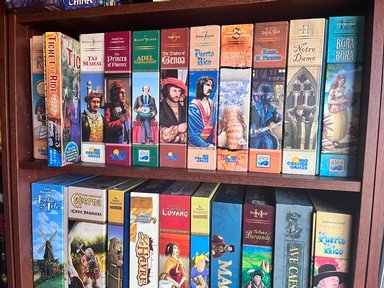Quiz Answer Key and Fun Facts
1. BACKGAMMON. Assuming your opponent does not force the piece back to the beginning, what is the maximum distance you would need to move to have one of your pieces "bear off" or get off of the board?
2. CHESS (Western Chess). In which direction or directions can a bishop move?
3. DRAUGHTS (Checkers). Which version of draughts would typically be played on the board with the largest number of spaces?
4. GO. In which country is the game Go believed to have originated?
5. HALATAFL. What is a distinctive feature of the northern European game Halatafl?
6. LUDUS LATRUNCULORUM. In the Roman board game ludus latrunculorum (The game of soldiers), the game pieces are described as moving like which chess piece?
7. NINE MEN'S MORRIS. In the game Nine Men's Morris, how many pieces do you need to have in a row to form a mill?
8. REVERSI. Which modern game is closest in play to the older game Reversi?
9. MANCALA. In the mancala family, where are your playing pieces when game play begins?
10. SENET. How many playing squares are found on a senet board?
Source: Author
bernie73
This quiz was reviewed by FunTrivia editor
WesleyCrusher before going online.
Any errors found in FunTrivia content are routinely corrected through our feedback system.
